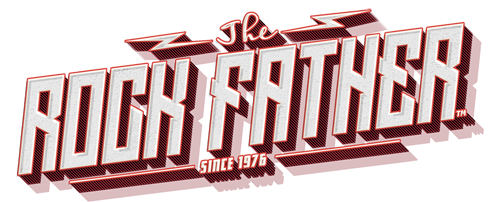As a child of the 1980’s, a trip to SHOWBIZ PIZZA PLACE was an event – a momentous occasion that was saved for birthday celebrations and other rare gatherings that warranted more than a simple meal. The Matteson, Illinois, ShowBiz was the one that I’d occasionally be treated to (along with the short-lived, similarly-themed, CELEBRATION STATION in Park Forest, IL), and what made the trip even better was the fact that ShowBiz was conveniently located directly next door to TOYS R US.
 The approach to ShowBiz was met by a long entry hallway, dimly-lit, but adorned with fake movie posters with titles like PIZZA WARS – each surrounded by a bright frame of flashing lights. Inside, families would be met with the overwhelming excitement provided by a vast array of sound and lights from all the latest arcade hits of the day, which populated the game room right alongside the classic games of skill like Skee-Ball. There was a gift-shop/prize-redemption center, a place to order food and game tokens, and all of this was on the way to the main attraction that awaited toward the back of the venue. Deep within the dining room, quietly hidden behind floor-to-ceiling curtains, was one of the greatest rock bands that the decade would ever see. Billy Bob Brockali, Looney Bird, Dook LaRue, Fatz Geronimo, Beach Bear, Mitzi Mozzarella – collectively known asTHE ROCK-AFIRE EXPLOSION (RAE).
The approach to ShowBiz was met by a long entry hallway, dimly-lit, but adorned with fake movie posters with titles like PIZZA WARS – each surrounded by a bright frame of flashing lights. Inside, families would be met with the overwhelming excitement provided by a vast array of sound and lights from all the latest arcade hits of the day, which populated the game room right alongside the classic games of skill like Skee-Ball. There was a gift-shop/prize-redemption center, a place to order food and game tokens, and all of this was on the way to the main attraction that awaited toward the back of the venue. Deep within the dining room, quietly hidden behind floor-to-ceiling curtains, was one of the greatest rock bands that the decade would ever see. Billy Bob Brockali, Looney Bird, Dook LaRue, Fatz Geronimo, Beach Bear, Mitzi Mozzarella – collectively known asTHE ROCK-AFIRE EXPLOSION (RAE).
Performing every 15 minutes or so on a three-stage set-up that included the comedic antics of Rolf deWolfe and Earle Schemerle on the left, the animatronic band would break out a mix of popular songs and original tunes aimed clearly at youngsters like myself. Unfortunately, like hair metal and new wave, the popularity of the RAE didn’t last much beyond the 80’s, as a merger with a longtime competitor brought about ”concept unification” that banished the band in favor of a cigar-chomping rat named CHUCK E. CHEESE and his pals.
Two decades later and Chuck’s now a mouse (he still sucks), and like The Blues Brothers, the band is back together – rocking out on YouTube via a hardcore fanbase mesmerized by the RAE, resurrected and re-programmed to perform a bunch of current hits. When the band first started popping up again, I was one of those that was watching.
 In 2010, I first became aware of a 2008 documentary that presented not only a history of the animatronic legends, but the story of their passionate fanbase – the people that kept the spirit alive – eventually leading to the second coming of the RAE, and the overdue appreciation of their creator – Florida-based inventor Aaron Fechter. It wasn’t until this past week that I actually got to see the film for myself via the free trial of Netflix streaming that I’ve been dabbling in.
In 2010, I first became aware of a 2008 documentary that presented not only a history of the animatronic legends, but the story of their passionate fanbase – the people that kept the spirit alive – eventually leading to the second coming of the RAE, and the overdue appreciation of their creator – Florida-based inventor Aaron Fechter. It wasn’t until this past week that I actually got to see the film for myself via the free trial of Netflix streaming that I’ve been dabbling in.
Created by filmmakers Brett Whitcomb and Bradford Thomason under producer Jason Connell (STRICTLY BACKGROUND), THE ROCK-AFIRE EXPLOSION features a narrative told through the words of Fechter and his fans – the largest focus of which is on Chris Thrash, a former roller-rink DJ who assembled his own RAE after contacting Fechter directly. Through the interviews and personal tales, we meet a bunch of people who are maintaining a piece of history – and their own childhoods – by preserving a few of the 280 bands that were originally created for ShowBiz from 1980-1983.
While the story of the fans is compelling, it’s Fechter’s story that I’ve always been most interested in. As the head of Creative Engineering, Inc., Fechter led a massive crew that grew to hundreds and shrunk back to just one – himself. Producing the Rock-afire Explosion was big business, reportedly a $20M-a-year endeavor at it’s peak, and while Creative Engineering continued to evolve and produce animatronics well after their relationship with ShowBiz and the Chuck E. Cheese camps soured, eventually it just wasn’t a sustainable affair anymore. One point that I wish had been addressed in the film still puzzles me, and that’s how Fechter has been able to financially maintain the deteriorating headquarters of Creative Engineering for all these years. Like a time capsule of lost technology, Aaron takes viewers through the building to show the archaic boardroom, audio equipment room (an analog goldmine), the shop were masks and robots were once built, and to the storage area where the last remaining original RAE show still exists in unopened crates. There’s spooky moments where we’re shown toxic “ooze” leaking onto the floor (”I haven’t had it tested yet,” says Aaron), and masks turned into literally melting faces, dripping from their animatronic skeletons and onto the ancient equipment below. The original molds and tools are all still there, as if someone left for work 20 years ago, and simply never returned. It’s fascinating.
While the documentary may have captured the story of the RAE, it’s likely inspired it’s continued rebirth. Since the release of the film to the festival circuit and subsequently DVD and streaming, the RAE has appeared in music videos for MGMT’s Electric Feel, KOKAYI’s RoxTar, and most recently (and best done in), MAYER HAWTHORNE’s Dreaming. Additionally, The Rock-afire Explosion released their first original song since 1984 with I Ain’t Gay (get it on iTunes) this past October.
THE ROCK-AFIRE EXPLOSION is a must-watch film for those who experienced ShowBiz Pizza as a kid, or for anyone interested in a 1980’s nostalgia trip. Consider this doc Rock Father™ approved
Rating: 4.5/5 
{source}


